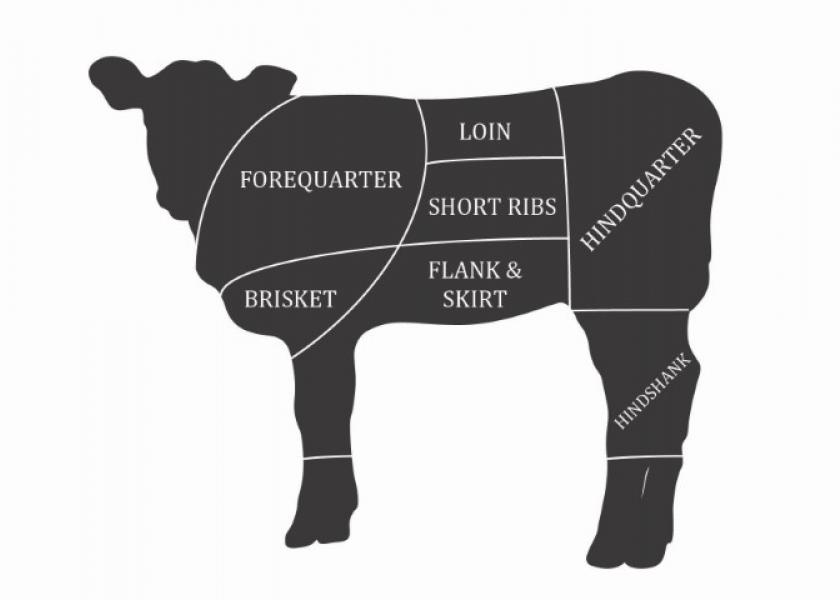Meat Market: A History of U.S. Meat Consumption (INFOGRAPHIC)

Americans eat more meat per person than residents of almost any other country, but what meat they eat has evolved and will continue to adapt. “Our lifestyles and preferences have changed,” says John Nalivka, president of Sterling Marketing. “Most people don’t sit down and eat a 20-oz. steak anymore. Most of us are perfectly happy to have a quality 8-oz. steak."
Click on the graphic to see specific figures over time.
Annual Per-Person Consumption
Beef peaked in 1985 at
74.6 lbs.
Chicken peaked in 2006 at
60.9 lbs.
Pork peaked in 1980 at
52.1 lbs.
Fish peaked in 2004 at
16.5 lbs.
Turkey peaked in 1996 at
14.3 lbs.
A Cut Above The Rest
Ever-shifting eating patterns are causing certain retail cuts to gain popularity, increasing prices.
Click on the cut of meat to see average price per pound.

USDA retail prices per pound, November 2015.
For instance, bacon is the costliest cut of pork. “Bacon has been an ‘in food’ for several years,” says Ron Plain, professor emeritus in agricultural economics at the University of Missouri.
Click on the cut of meat to see average price per pound.

USDA retail prices per pound, November 2015.
High-quality steaks and chicken breasts also fetch top prices, according to USDA’s retail prices per pound for November 2015.
Click on the cut of meat to see average price per pound.

USDA retail prices per pound, November 2015.
How much space does meat earn on our plates? That’s determined by the economy, production levels and food habits. In the past few decades, U.S. consumers have cut back on protein and picked new favorites, but that’s only half the story. As incomes grow in other parts of the world, people will spend more on protein products, increasing demand for U.S. meat, says John Nalivka, president of Sterling Marketing.
Global Opportunities
Developing and emerging economies have the potential to become large export markets for U.S. livestock producers. They represent two-thirds of the world’s population and have seen meat con-sumption grow about 3% annually since the 1990s.
By contrast, meat consumption in developed countries has stayed steady over the same period, increasing just 0.4%.
Click on the graphic to see specific figures over time.
Growing Markets
Since the mid-1990s, three areas have seen signifi cant per-capita meat-consumption increases. Urbanization and expanding middle classes will allow a greater percentage of the people living in these regions to afford meat.
Click on the circles on the map to see specific growth in each region.







